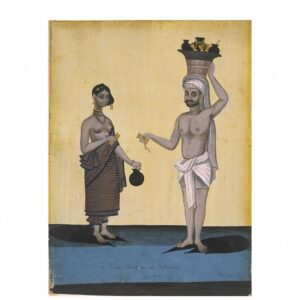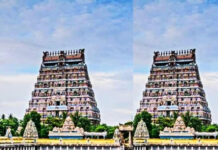 In a debate about Hinduism and caste, a person had sent two questions, stating that his ‘atheist’ friend had asked them. Atheists are merely deniers; they reject things without truly understanding them. It’s just a stance, that’s all. No matter what we say, they do not comprehend it.
In a debate about Hinduism and caste, a person had sent two questions, stating that his ‘atheist’ friend had asked them. Atheists are merely deniers; they reject things without truly understanding them. It’s just a stance, that’s all. No matter what we say, they do not comprehend it.
The first question is: Does only Hinduism have birth-based divisions among the Indian religions?
The second question is: Are birth-based divisions found only in Hindu scriptures, in the entire world?
Both questions stem from a fundamental misunderstanding. Indian religions like Jainism, Buddhism, and Sikhism also have caste systems and the Varna-Ashrama structure. These are mentioned in their scriptures. People who learn about religion and history through the rhetoric of public speakers will not be aware of this.
Jainism firmly emphasizes the Varna-Ashrama system. Jain scriptures state that all 24 Tirthankaras were Kshatriyas and only they can attain the Arhant state. The old Jain texts declare that Shudras and women cannot attain liberation in this life. Even today, Jains have a clear division of the four Varnas and caste distinctions among themselves.
Buddhist texts mention that Shudras and women do not have the right to renounce the world, as stated by the Buddha. This is because Shudras are not considered free individuals. Many Buddhist scriptures, such as the Madhura Sutta, Majjhima Nikaya, and Vinaya Pitaka, describe people involved in leatherwork or hair-related occupations as inferior, promoting untouchability. The concept of the four Varnas is emphasized in numerous Buddhist texts. In fact, the emphasis on Varna and caste in Buddhist scriptures is more pronounced than in Hindu scriptures.
This is easy to understand. If Jainism or Buddhism had allowed Shudras to renounce, no ruler would have supported them, as it would have destroyed the economic structure of that time. These religions grew with royal patronage because they accepted the dominance of the Kshatriyas and were favorable to the Vaishyas, thereby aiding the growth of commerce.
To understand this, we need clarity. We keep mistakenly believing that caste and Varna were created by religions. Caste and Varna are not related to religions. They were the hierarchical structures that naturally formed as ancient societies developed. The social and economic systems of that time were based on these structures. Governments were also established around them. Religions did not create caste and Varna, nor could they reject them.
Religions must support them, or else they cannot survive. We can understand this by observing today’s society. Even now, the social structure and economic system of Indian society revolve significantly around caste. Political parties, including those advocating revolution and atheism, actively engage with caste in their strategies for power. Within these organizations, there are both casteists and caste groups. No one can stand for election without considering caste. That’s how it has always been.
But within that system each religion made its moral contribution. Indian society has historically been made up of thousands of tribes.Tribal communities would have been in severe conflict with each other. Sangam era poems show us a social picture filled with violence. Jainism, Buddhism, and other religions advocated non-violence, thus fostering peace in India. Commerce flourished as a result, and both merchants and rulers supported it.
Next question. Are caste-based divisions only in Hindu texts? This question arises due to partial understanding. Hindu religious scriptures are of two types: those that expound theology and philosophies are called Shruti texts, while those that prescribe codes of conduct are called Smriti texts. Upanishads are Shruti texts. There are numerous Smriti texts such as Narada Smriti, Yama Smriti, and many more. Manusmriti is just one among them. They outline the codes of conduct.
When Gandhi met Narayana Guru, he asked if the Hindu primary texts endorse caste and Varna. Narayana Guru’s reply was this:
Shruti texts serve as determinants of the philosophical perspective of Hinduism. They do not advocate for caste or discrimination. Furthermore, even Shruti texts are guidelines to contemplate and reflect, and not divine mandates.
Smritis emphasize on Varna and Caste. But they change from time to time. Smrithi texts before Manu Smriti, such as the Yama Smriti, prescribes that all four varnas should recite the Vedas and perform yagna. Smriti texts can be subject to interpretation and change. Therefore, it cannot be definitively stated that caste and varna are explicitly endorsed in Hindu scriptures.
Gandhi recorded his meeting with Narayana Guru. Gandhi, after conversing with Narayana Guru, altered his perspective on the caste system, which he previously regarded as foundational to Hinduism. He even participated in temple entry movements nationwide. He asked the conservatives who came to meet him to show at least one proof from canon Hindu scriptures which inviolably mandates caste.
Gandhi later turned against the caste system. Asserting himself as a Sanatana Hindu, he made a firm resolution that he would personally conduct the marriage of a couple, if one of them is a Dalit. He solemnized the wedding of Jaganathan and Krishnammal, the Gandhians from Tamil Nadu.
These facts are reiterated numerous times in historical narratives. Regardless of how many times they are said or what evidence is presented, atheists remain unconvinced. They argue that the foundational scriptures of Hinduism endorse caste, and if we deny that it is not, they will replace any book that mentions casteism as the foundational scripture of Hinduism. It is these atheists who take the Manu Smriti as the canon of Hinduism more vehemently than the fanatical conservatives.
They don’t value the truth because they are not seeking it. Theirs is actually the voice of the proselytizing side which is fueled by the desire to propagate their agenda of religious conversion in the guise of truth. They are echoing the same narrative that foreigners established centuries ago. It is also a fact that many of them are non- Hindus disguised as atheists.
Jeyamohan
(Translated by Geethaa Senthilkumar)











